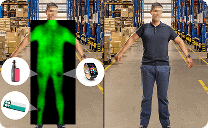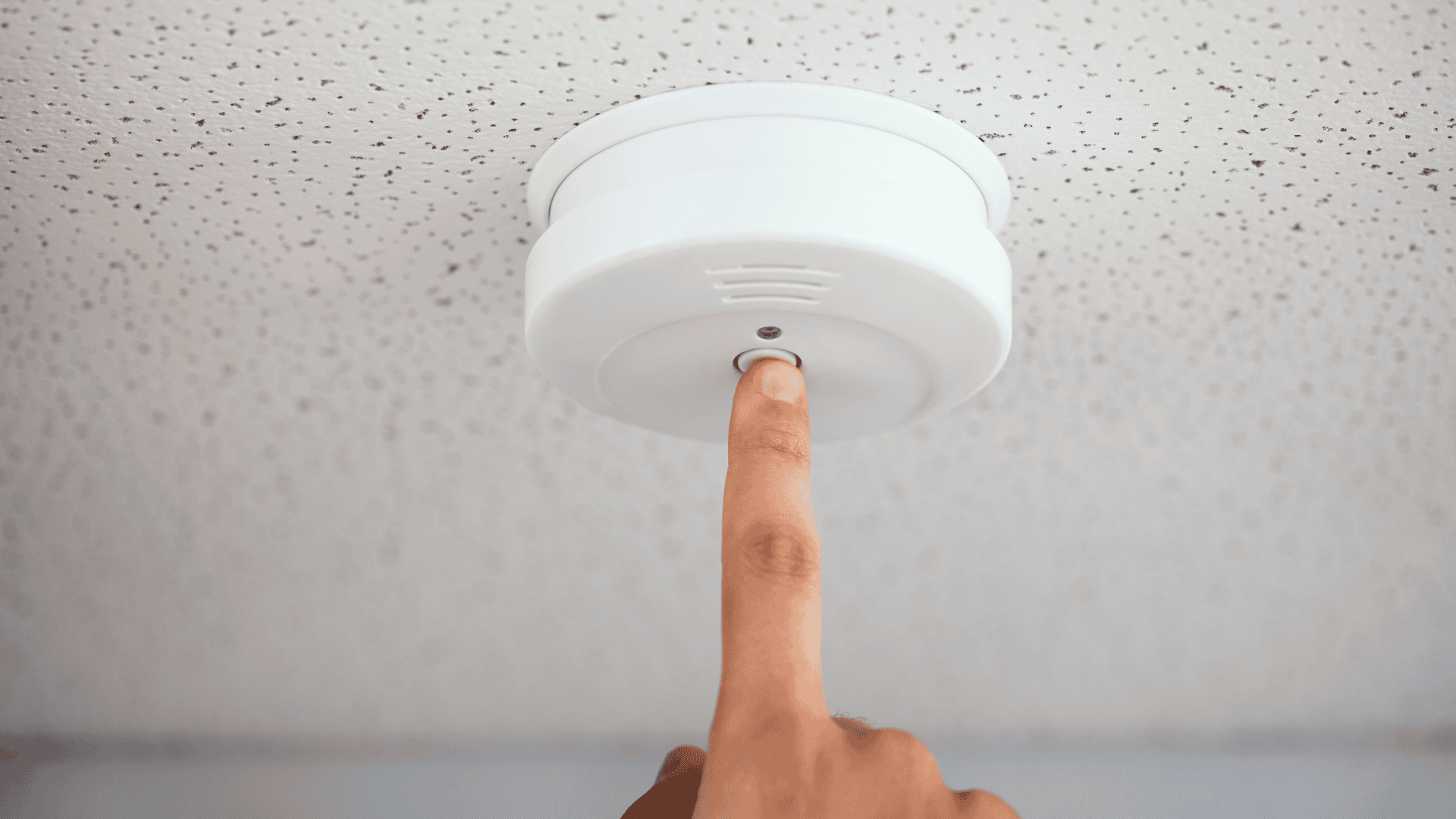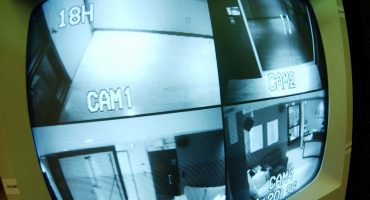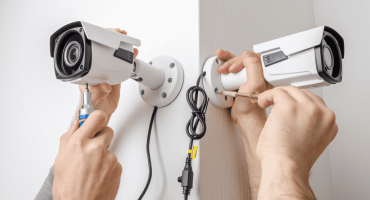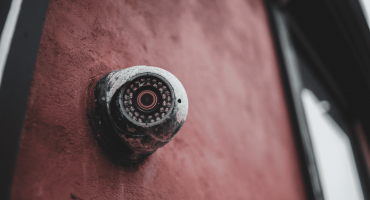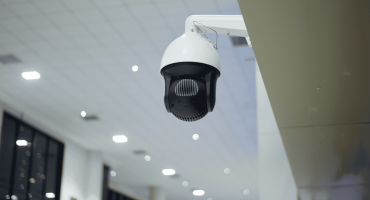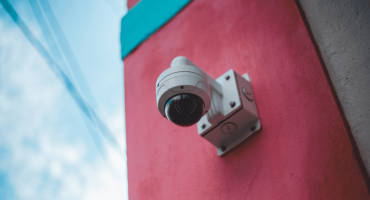In This article
Overview – The Big Picture
Businesses are continually seeking more efficient and intelligent surveillance solutions. One of the key innovations driving modern security systems is the motion detector camera. These cameras are equipped with technology that allows them to identify movement within their field of vision and respond accordingly.
A motion detector camera security system enhances surveillance efficiency by reducing unnecessary recording, conserving storage space, and triggering alerts only when movement is detected. This technology is widely used in:
- Commercial buildings
- Industrial settings
- Residential buildings
The motion detection camera’s ability to enhance safety, monitor activity, and deter potential threats has made it a crucial component of modern security infrastructures.
Historical Development of Motion Detectors in Security
The concept of motion detectors dates back several decades, but their integration into commonly used security systems is a relatively recent advancement. The earliest motion sensors relied on mechanical or pressure-based mechanisms, but these were limited in their effectiveness. The introduction of Passive Infrared (PIR) sensors in the mid-20th century revolutionized motion detection, enabling systems to detect the heat signatures emitted by humans and animals.
Over time, motion detectors have evolved to include microwave, ultrasonic, and AI-enhanced detection technologies. Integrating these technologies into security cameras has significantly improved surveillance efficiency, enabling easier identification of suspicious activities while reducing false alarms. Across a wide range of applications, these technologies work together to provide precise, real-time monitoring.
How Motion Detectors Work
At their core, motion detectors function by sensing changes in their environment and triggering an appropriate response, such as activating a camera, sending an alert, or sounding an alarm. These sensors can detect movement through various technologies:
- Passive Infrared (PIR) Sensors – Detect the heat emitted by people, animals, or vehicles and are commonly used in commercial security cameras.
- Microwave Sensors – Emit microwave pulses and measure reflections from moving objects. They provide broader coverage but can be sensitive to non-human movement.
- Ultrasonic Sensors – Use high-frequency sound waves to detect motion. These are highly sensitive but may be prone to false triggers from environmental factors.
- Dual Technology Sensors – Combine two or more detection methods, such as PIR and microwave, to reduce false alarms and improve detection accuracy.
Integration of Motion Detectors in Security Cameras
The integration of motion detectors into security cameras has revolutionized the operation of surveillance systems. Here’s how they enhance camera performance:
- Motion-Triggered Recording – Security cameras equipped with motion detectors only begin recording when movement is detected, saving storage space and reducing unnecessary footage.
- Real-Time Alerts and Notifications—Users receive instant notifications when movement is detected, allowing them to respond immediately to potential threats.
- Energy Efficiency – Cameras with motion detectors consume less power because they remain idle until movement is detected, thereby extending the battery life of wireless cameras.
- Smart Integration – Many modern motion detector security cameras can be seamlessly integrated with point-of-sale (POS) systems, enabling the synchronization of events.
These features collectively make motion detector camera security systems more effective, reducing the need for continuous manual monitoring.
Benefits of Using Motion Detectors with Security Cameras
The combination of motion detector security cameras offers several benefits:
- Reduced False Alarms – Advanced detection filters out unnecessary triggers, such as passing cars or small animals, improving accuracy.
- Enhanced Real-Time Monitoring – Instant alerts allow security personnel or homeowners to respond quickly to suspicious activity.
- Cost-Effective Surveillance – Motion-triggered recording minimizes data storage costs and prolongs the lifespan of storage devices.
- Versatility – Suitable for use in various environments, including homes, offices, parking lots, and industrial sites.
- Deter Criminal Activity – The presence of visible motion detector cameras discourages trespassers and elevates security.
- Legal and Insurance Benefits – Surveillance footage from motion detector security cameras can serve as critical evidence in legal cases and insurance claims, protecting businesses and homeowners from liability issues or supporting charges against criminals.
Challenges and Limitations
Despite their advantages, motion detector security cameras come with challenges:
- Sensor Sensitivity Issues—Motion detectors may struggle to distinguish between actual threats and harmless movement, leading to false alerts that waste the business owner’s or security personnel’s time.
- Environmental Interference – Extreme weather conditions, fluctuating temperatures, or moving objects (such as tree branches) can impact sensor accuracy.
- Limited Detection Range – Some sensors may not detect movement beyond a specific distance, requiring strategic camera placement.
Manufacturers are continually enhancing motion detectors with AI-driven analytics and improved filtering mechanisms to ensure greater accuracy. When making a purchase, consider the latest motion detection cameras to stay ahead of the curve.
Current Trends in Motion Detector Security Cameras
- AI-Powered Motion Detection – Artificial intelligence enhances detection capabilities by distinguishing between humans, animals, and objects, reducing false alarms.
- Cloud-Based Surveillance – Cameras with motion detectors now offer cloud storage options, enabling users to access footage remotely.
- Improved Night Vision and Low-Light Detection – Advances in thermal imaging and infrared detection allow motion detector security cameras to operate effectively in low-light conditions.
- 5G-Enabled Security Cameras – Faster data transfer and real-time analytics make security cameras more responsive and efficient.
These advancements continue to improve the efficiency and reliability of motion detector technology in security applications.
Conclusion
Motion detectors have become a fundamental component of modern security cameras, enhancing surveillance accuracy and efficiency. From preventing false alarms to enabling real-time alerts, motion detector security cameras provide businesses and homeowners with an effective security solution.
As technology advances, motion detectors will become increasingly sophisticated, further enhancing security systems across all industries.
Whether for personal or commercial use, investing in a motion detector camera security system is a smart choice to enhance safety and ensure peace of mind.
Learn more about VIDEOiQ, DTiQ’s intelligent video capabilities.
Frequently Asked Questions
1. What is the difference between motion detectors and security cameras?
Security cameras capture video footage continuously or when triggered, whereas motion detectors sense movement and activate security responses, such as recording or sending alerts.
2. How do motion detectors reduce false alarms?
Modern motion detectors utilize dual-sensor technology and AI-based filtering to distinguish between genuine threats and harmless movements, thereby enhancing accuracy.
3. Are motion detector security cameras suitable for outdoor use?
Many motion detector security cameras are designed for outdoor use, featuring weatherproof casings and infrared night vision capabilities.
4. How to choose the best security camera with a motion detector?
To find the right motion detector security camera for your needs, consider factors such as detection range, resolution, integration capabilities, power options, and storage capacity.
